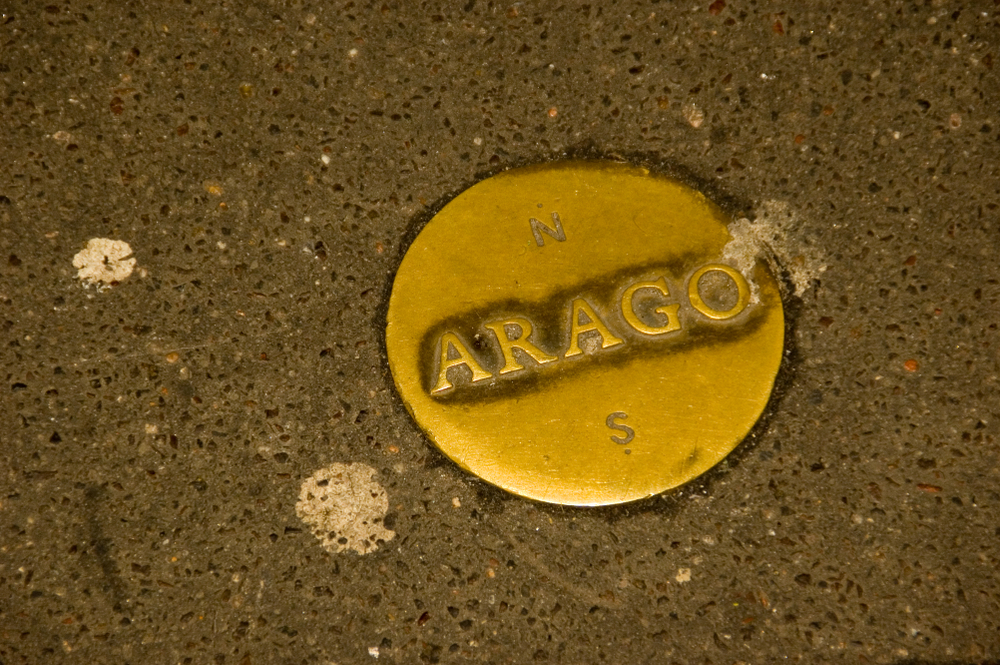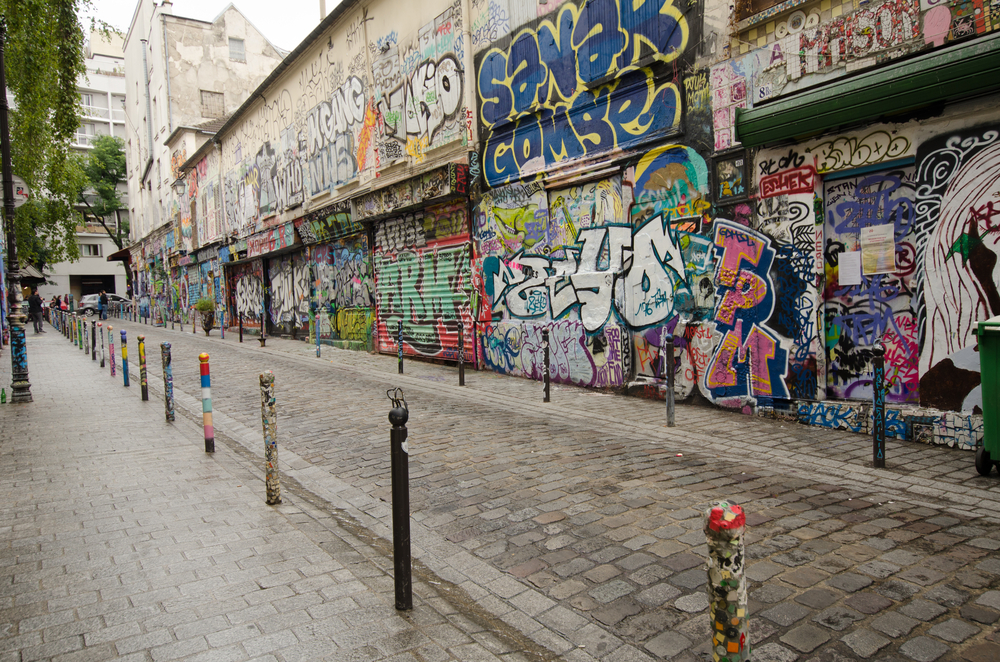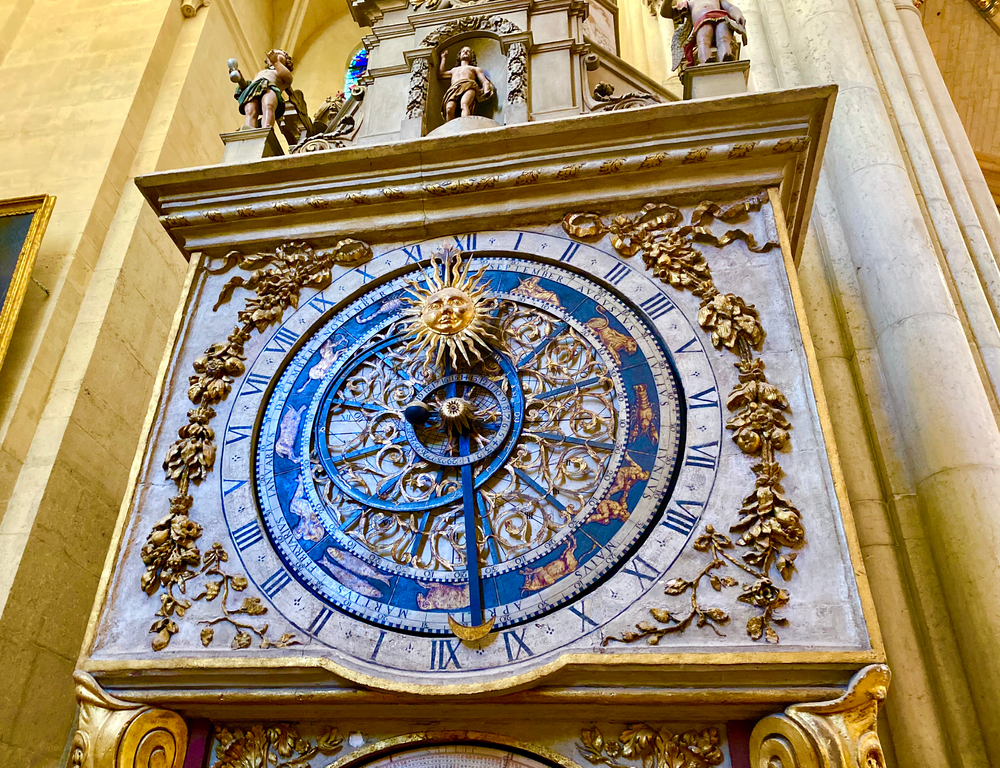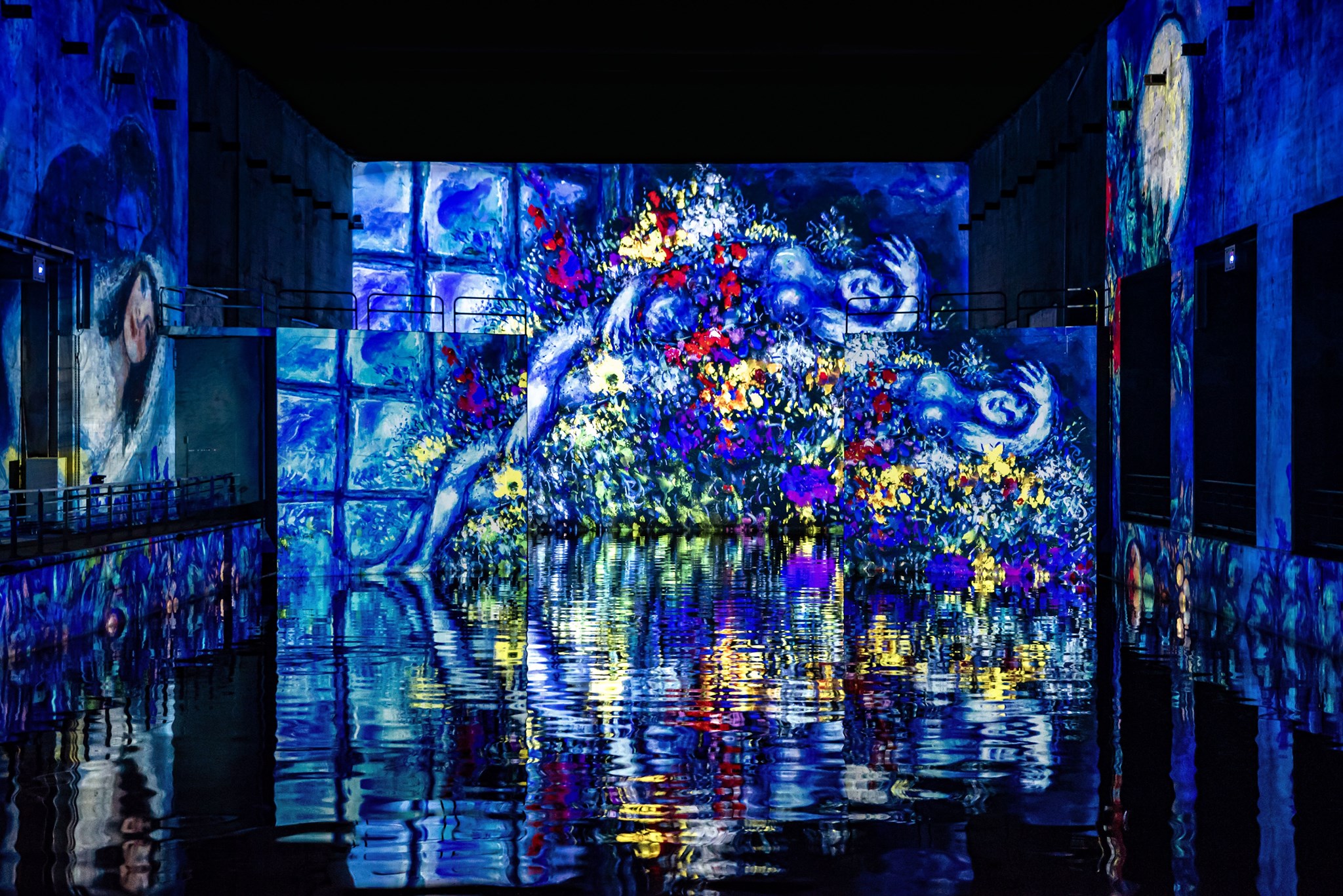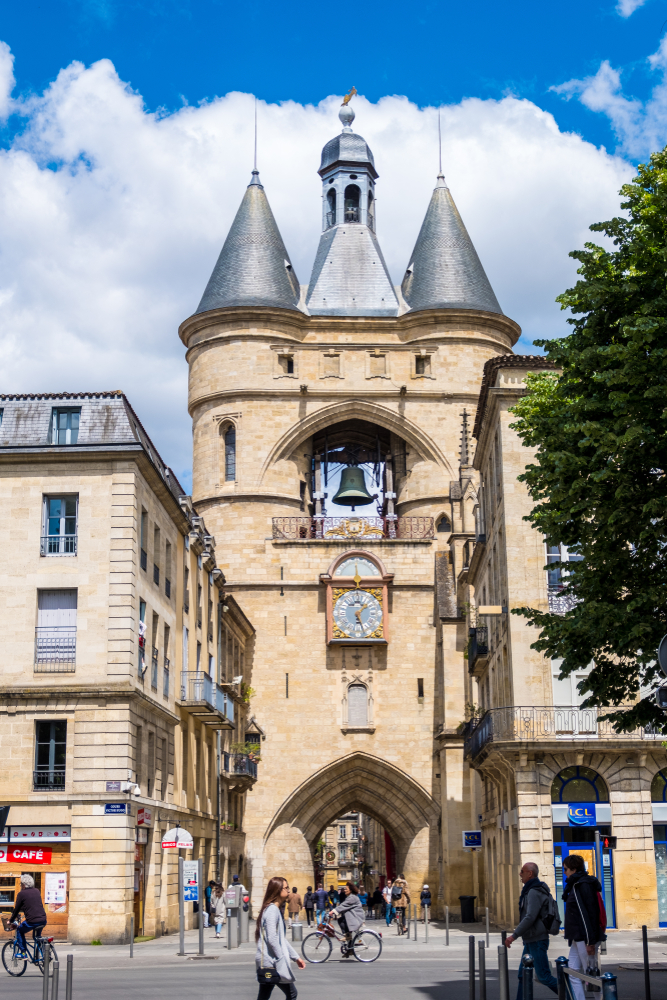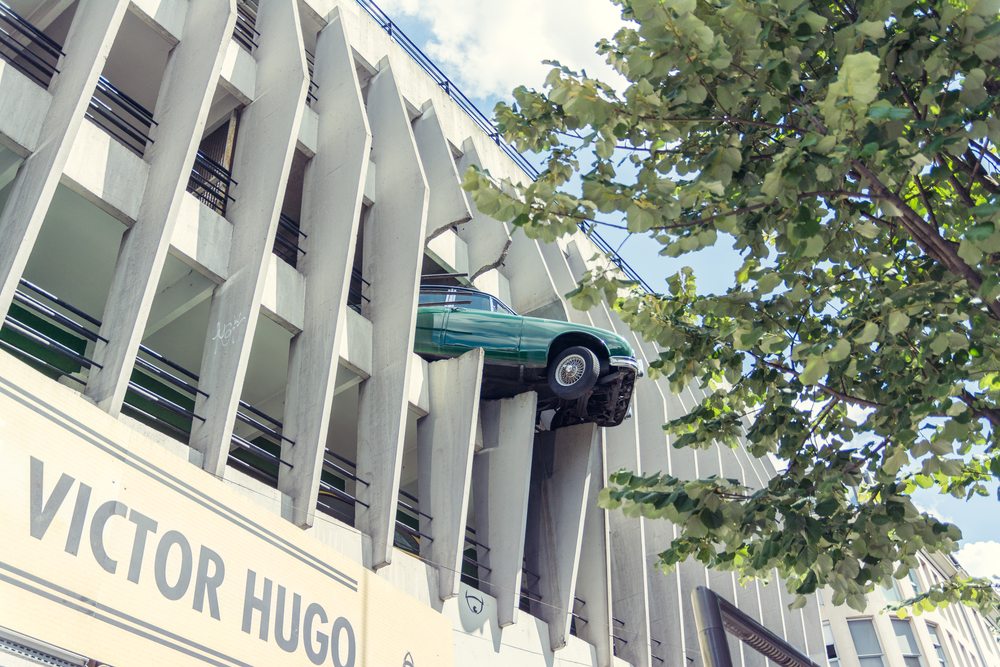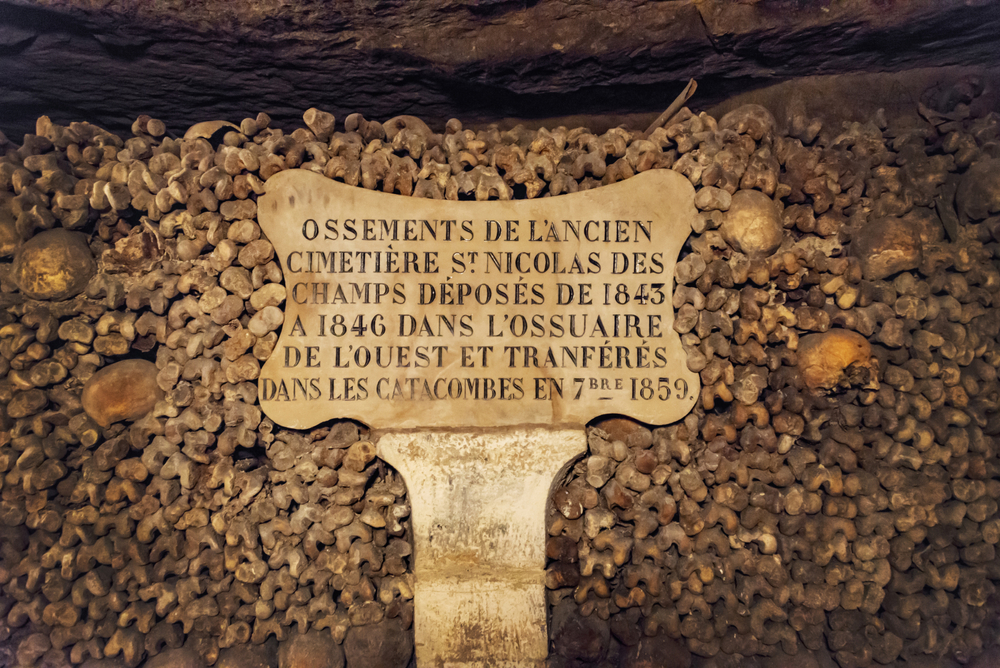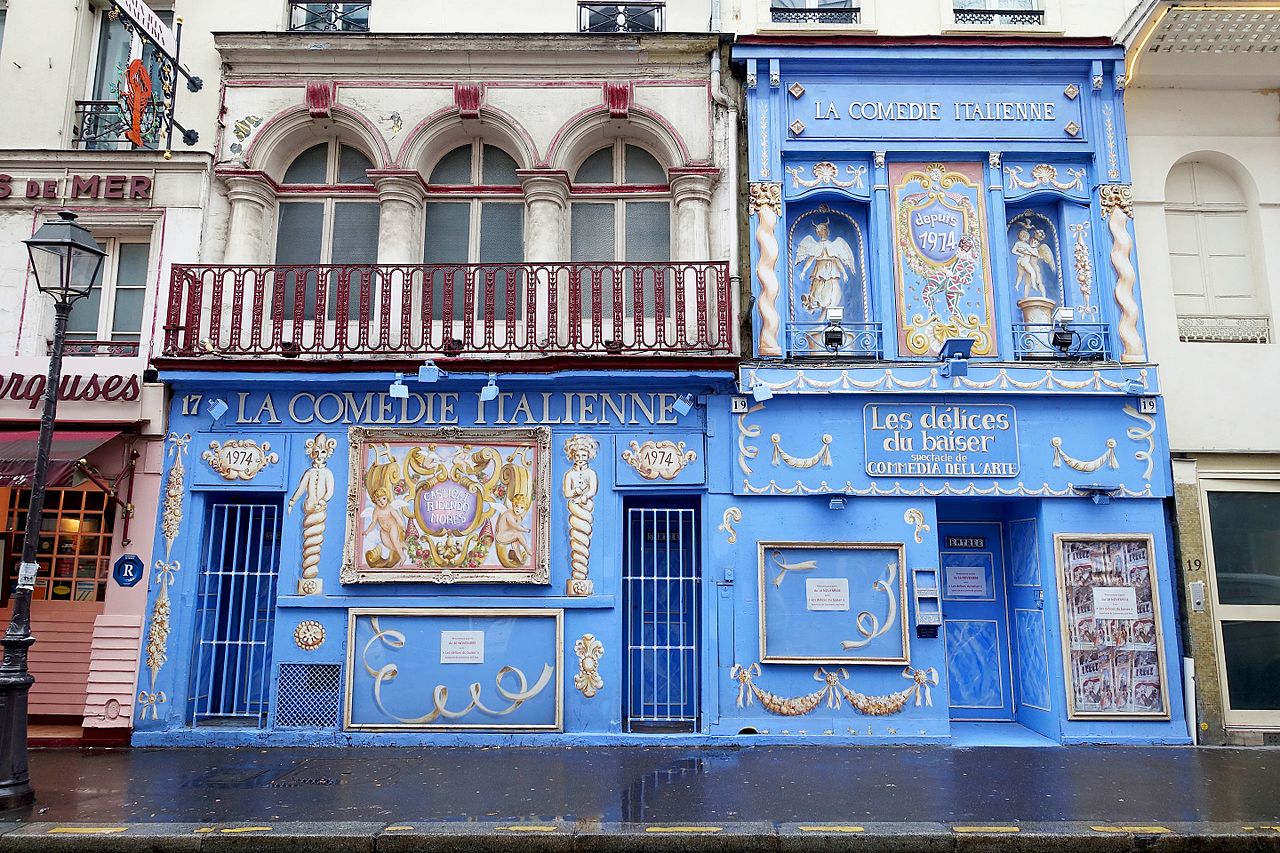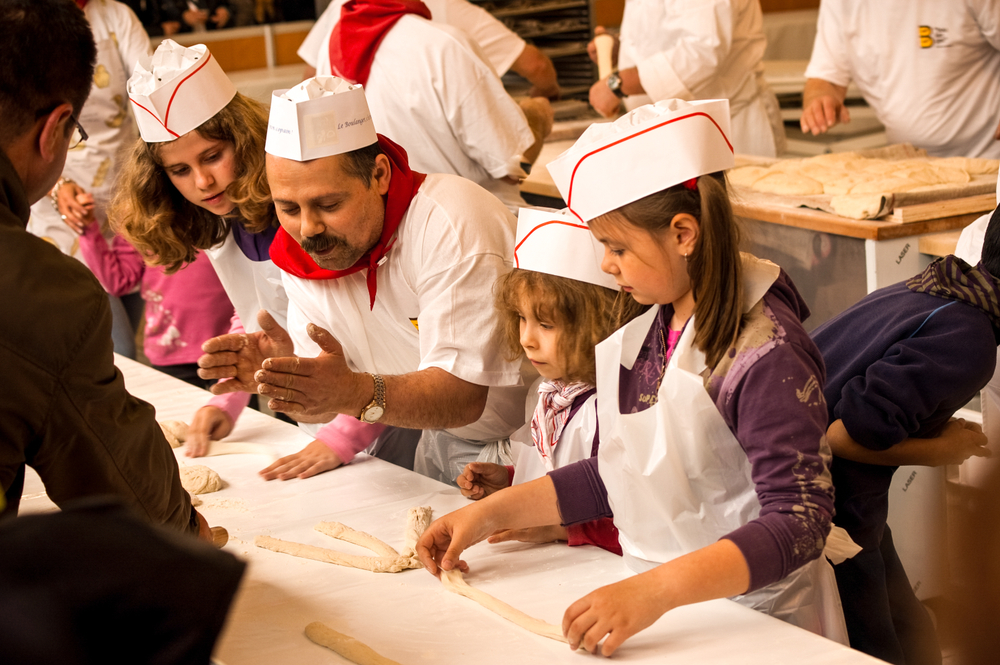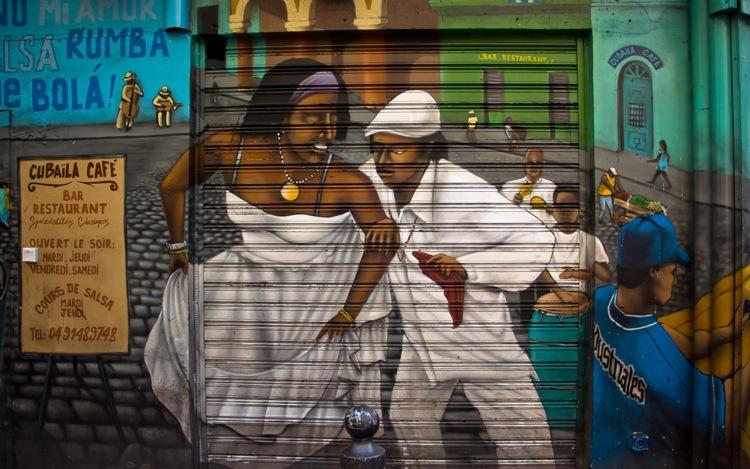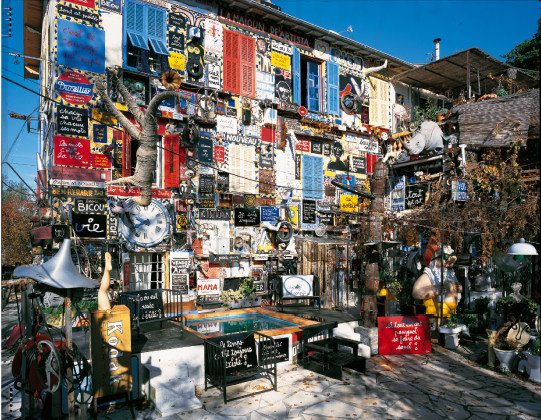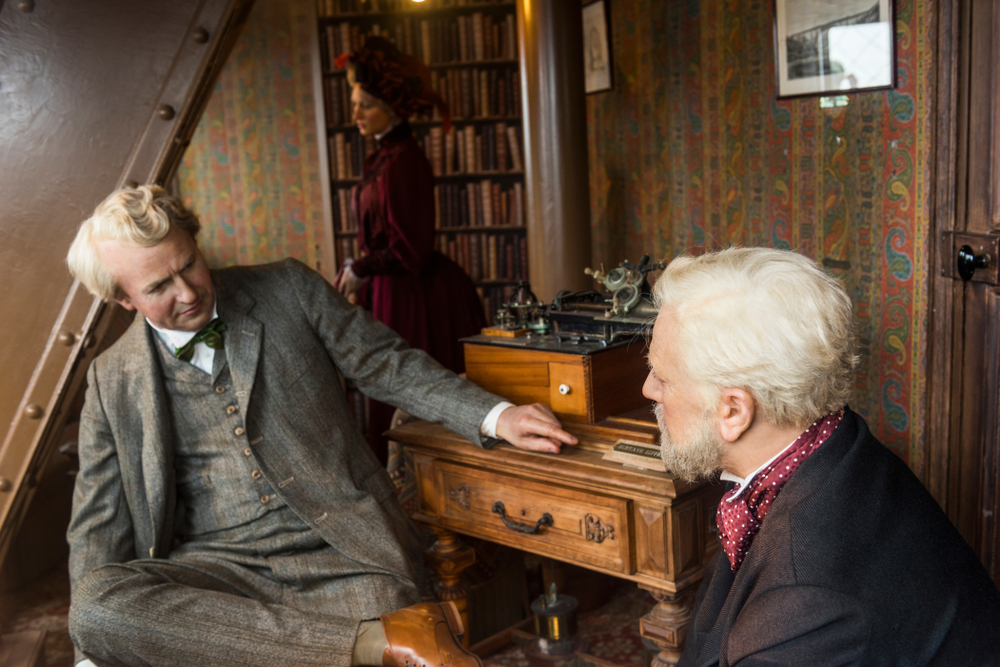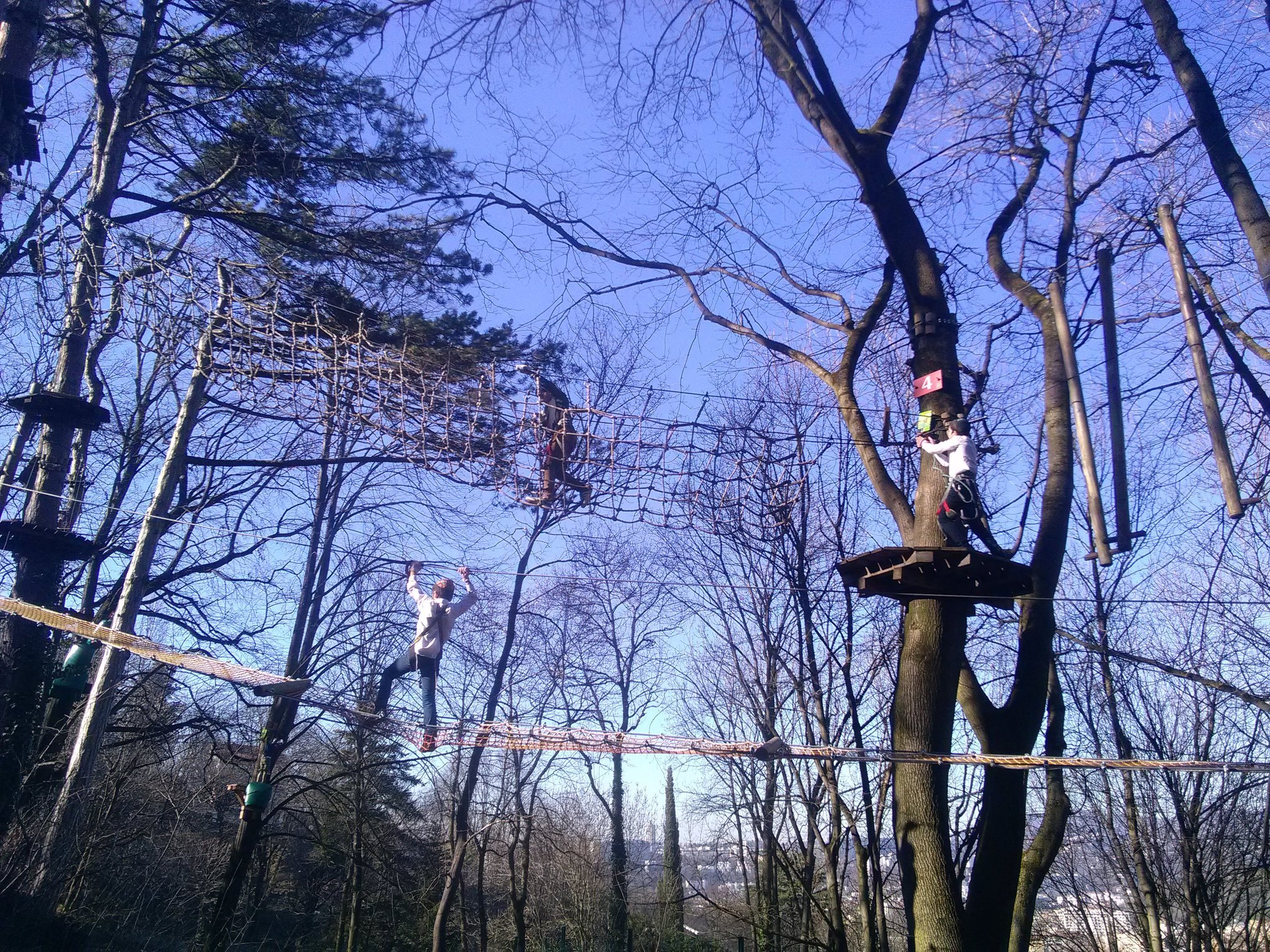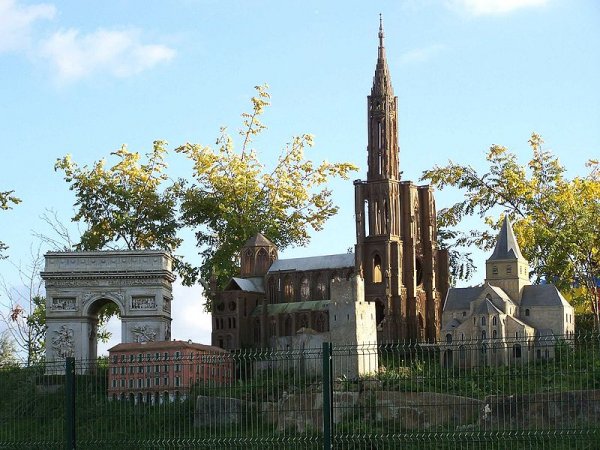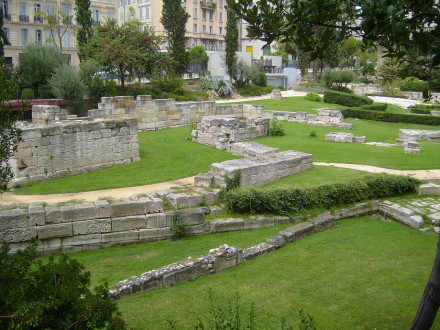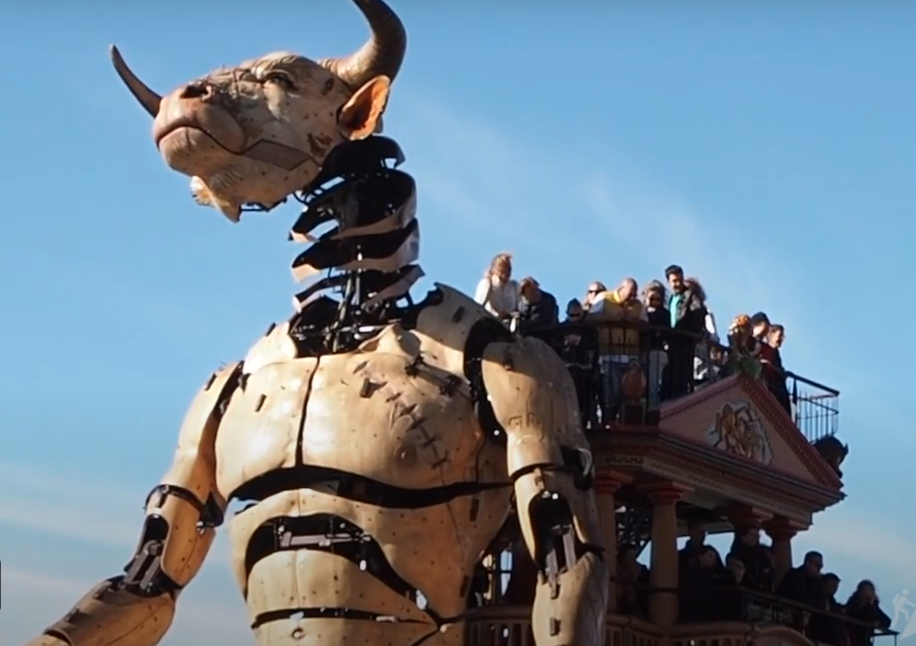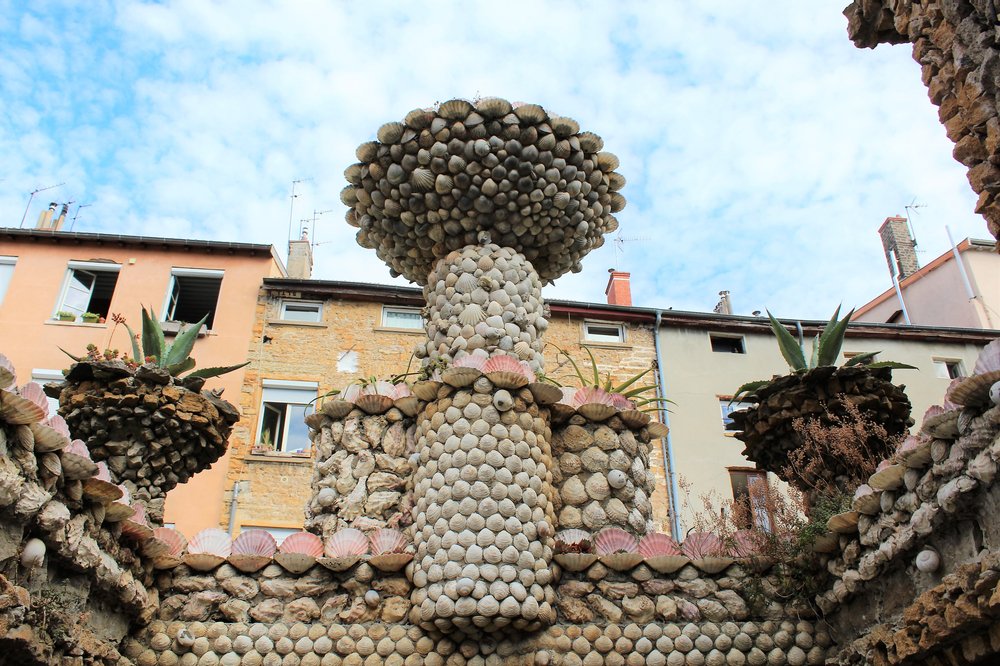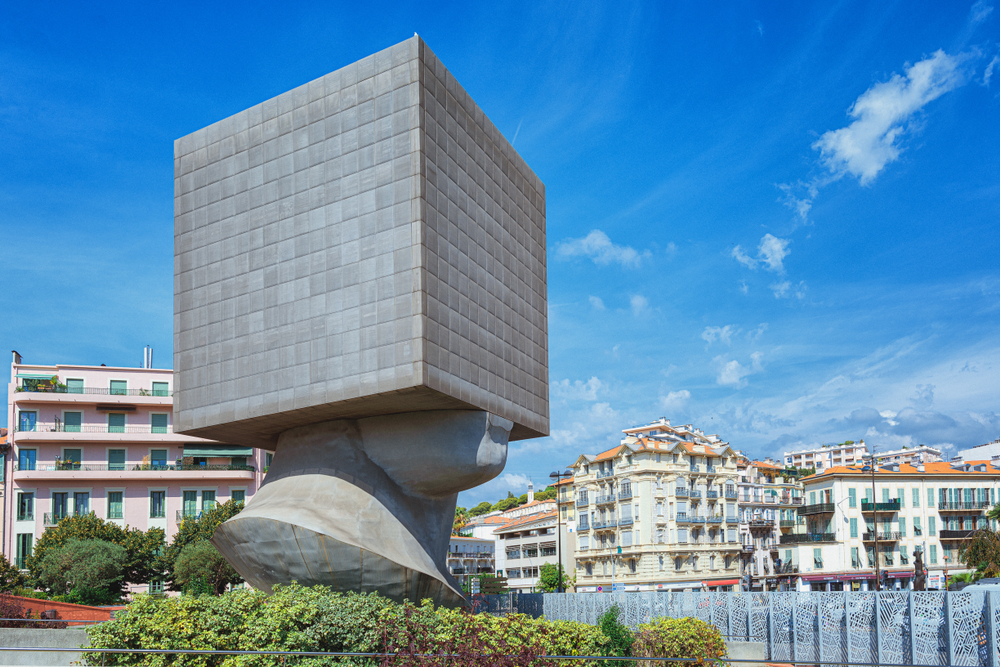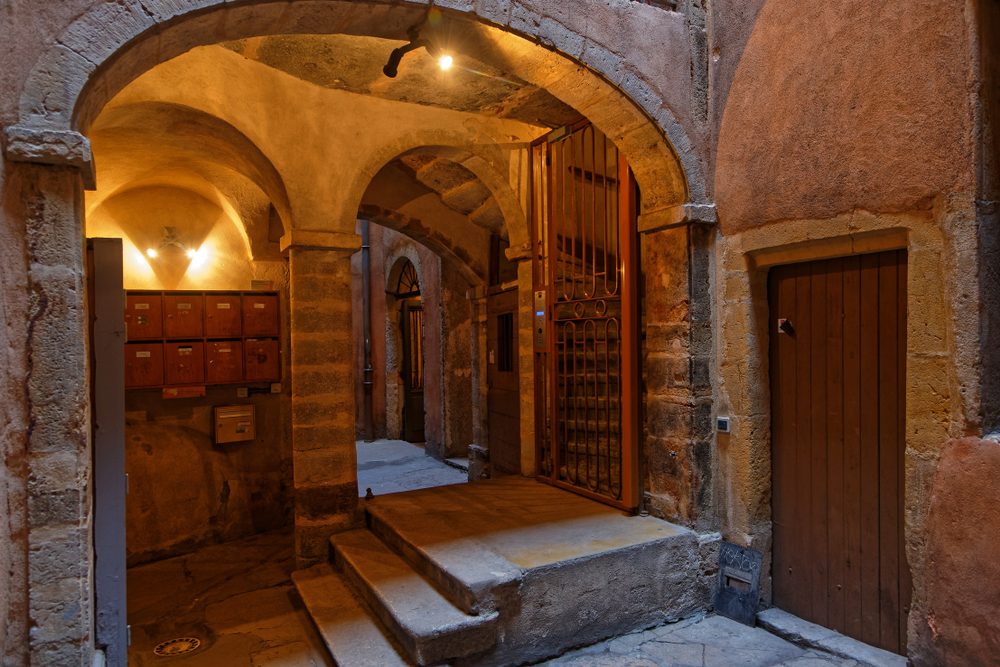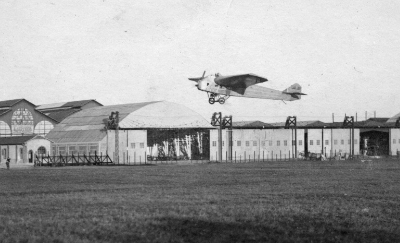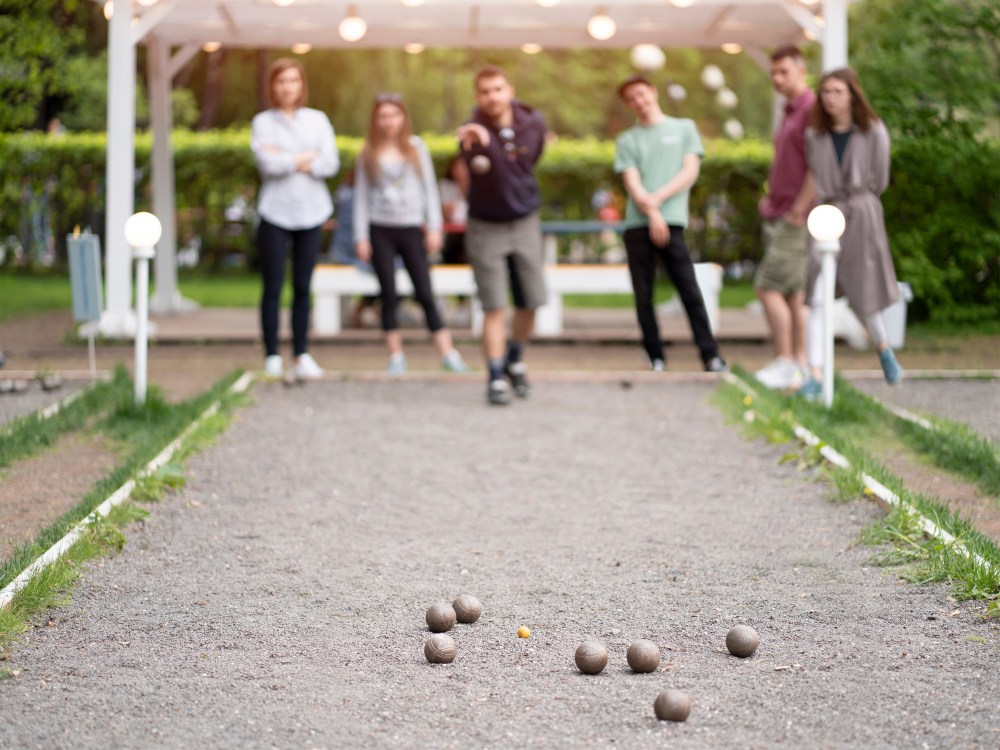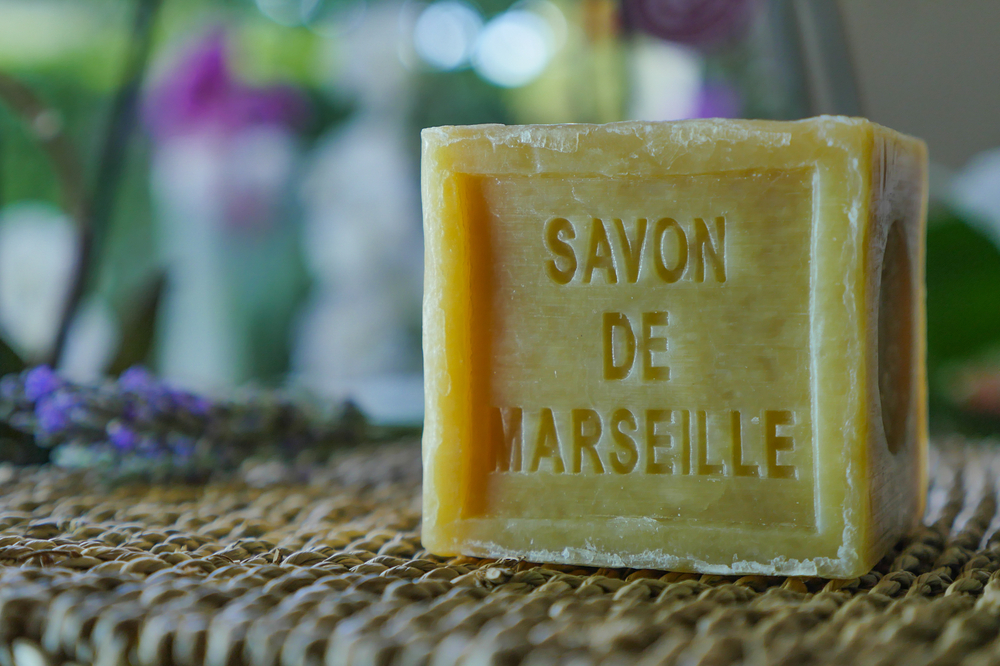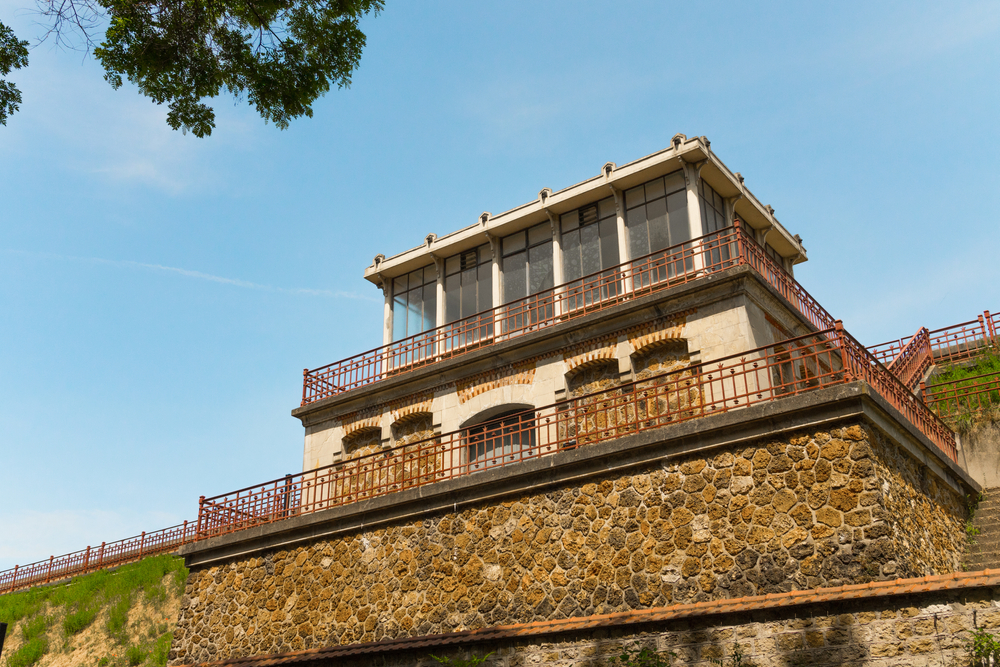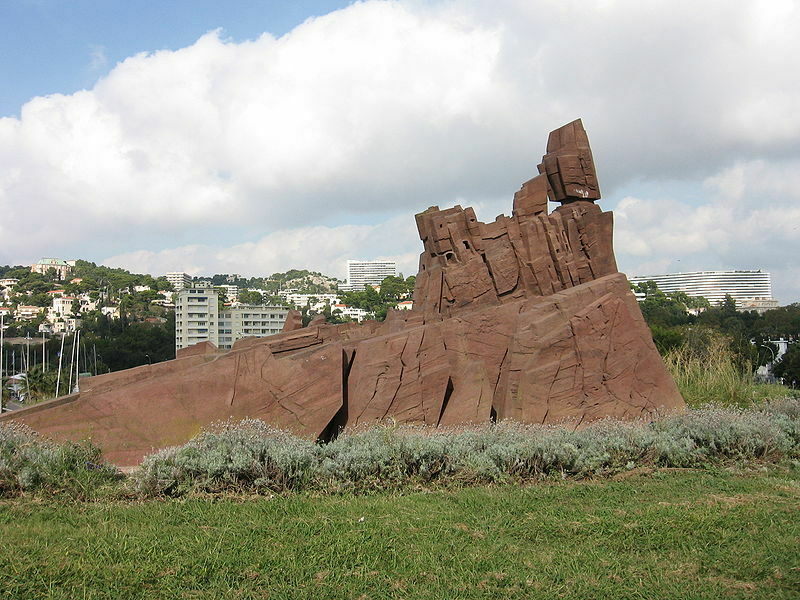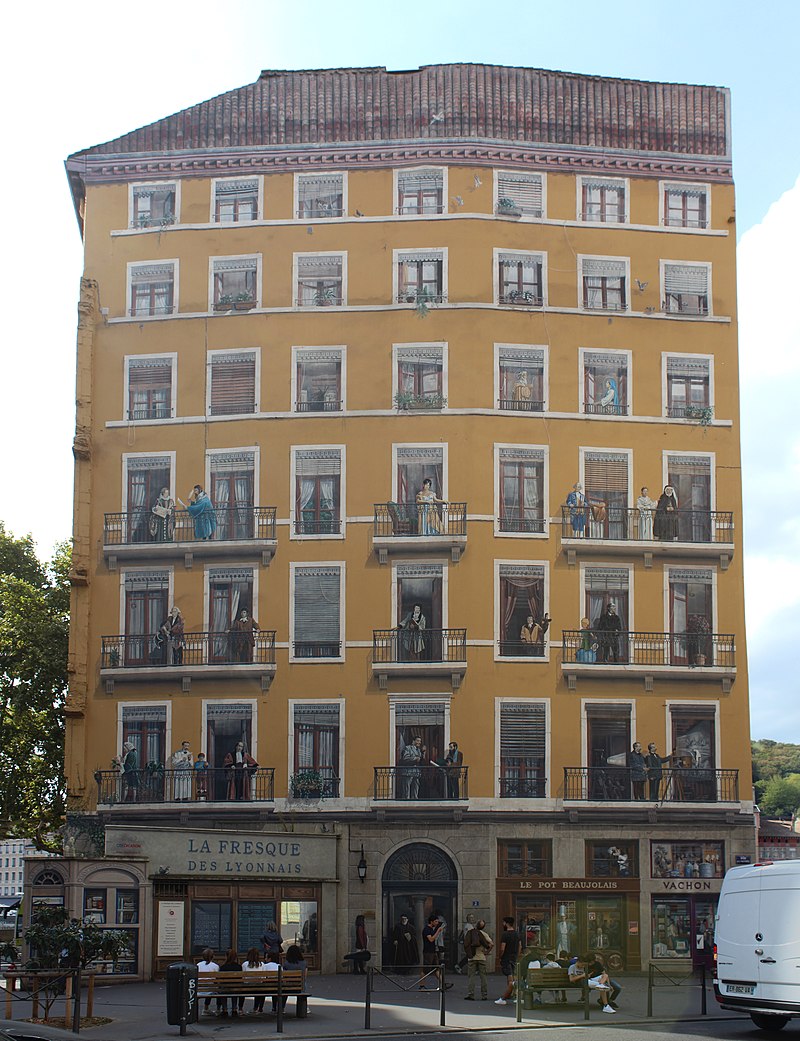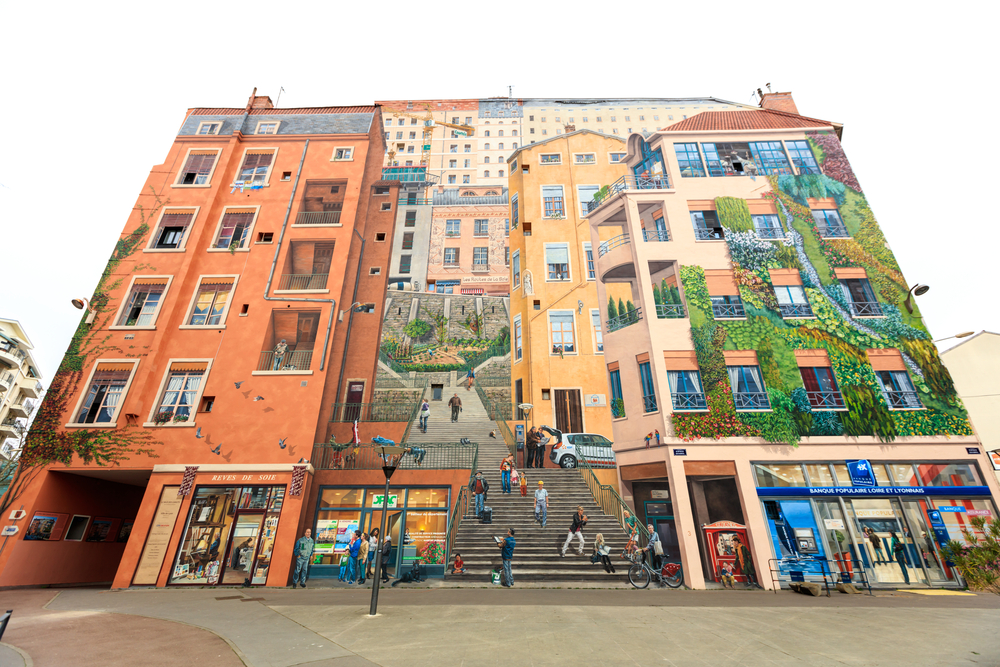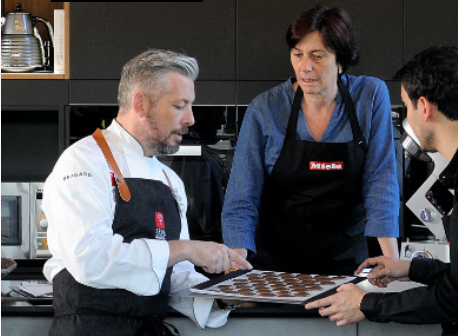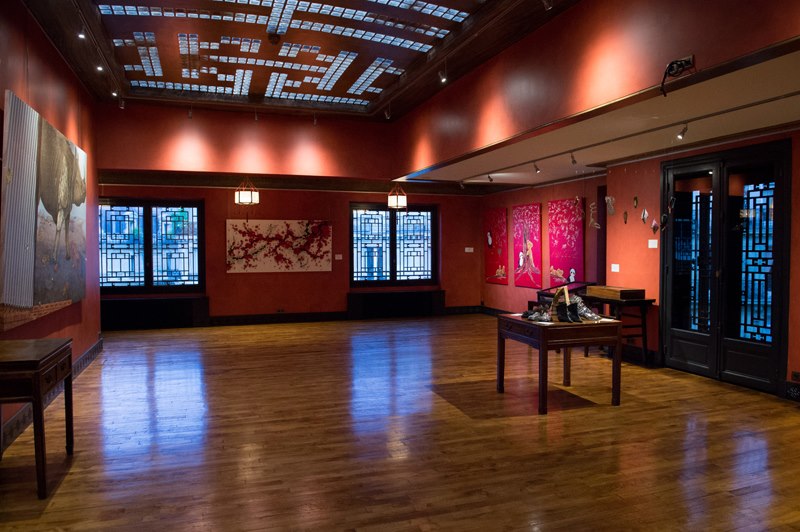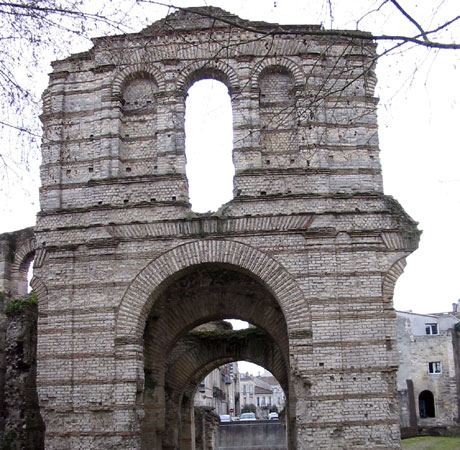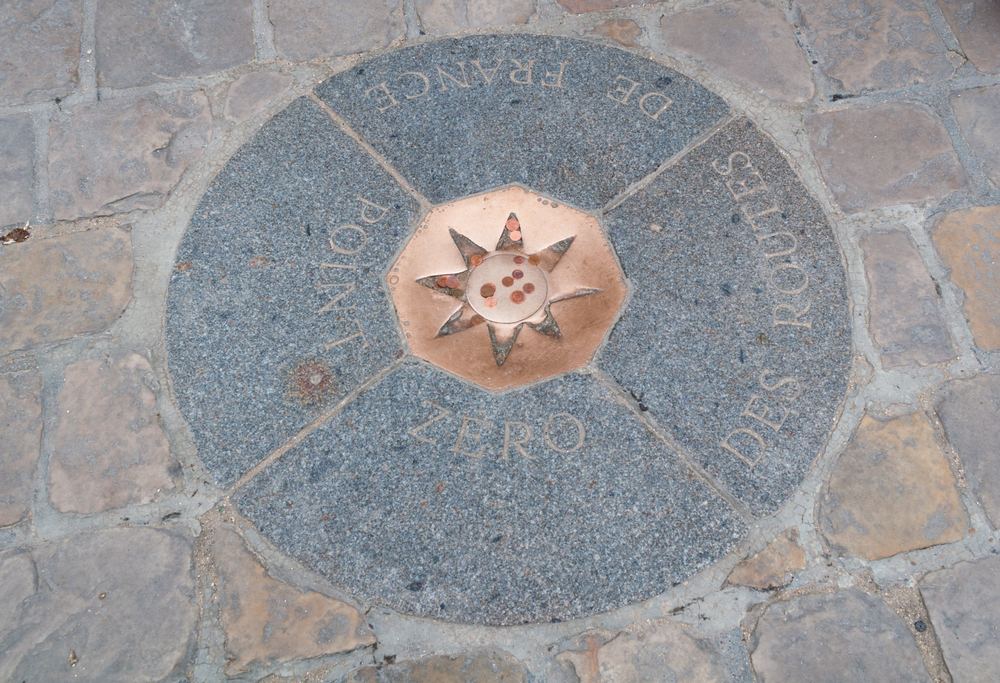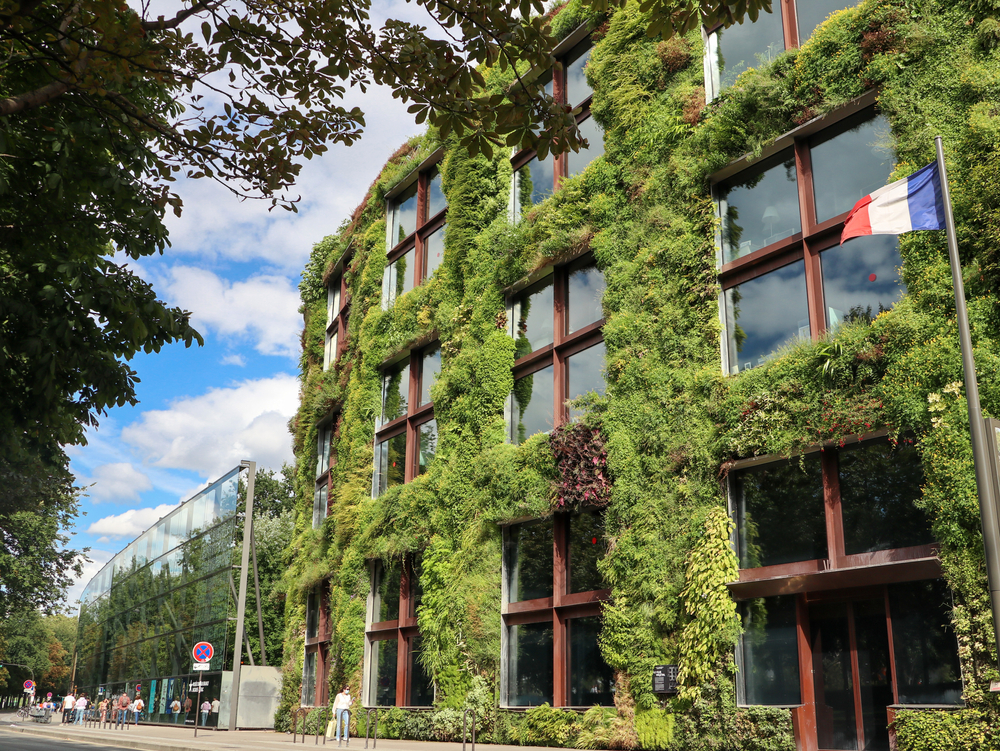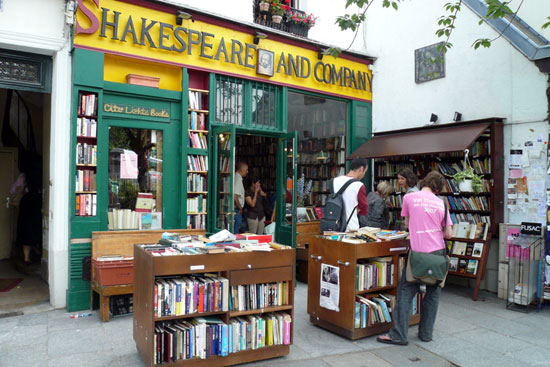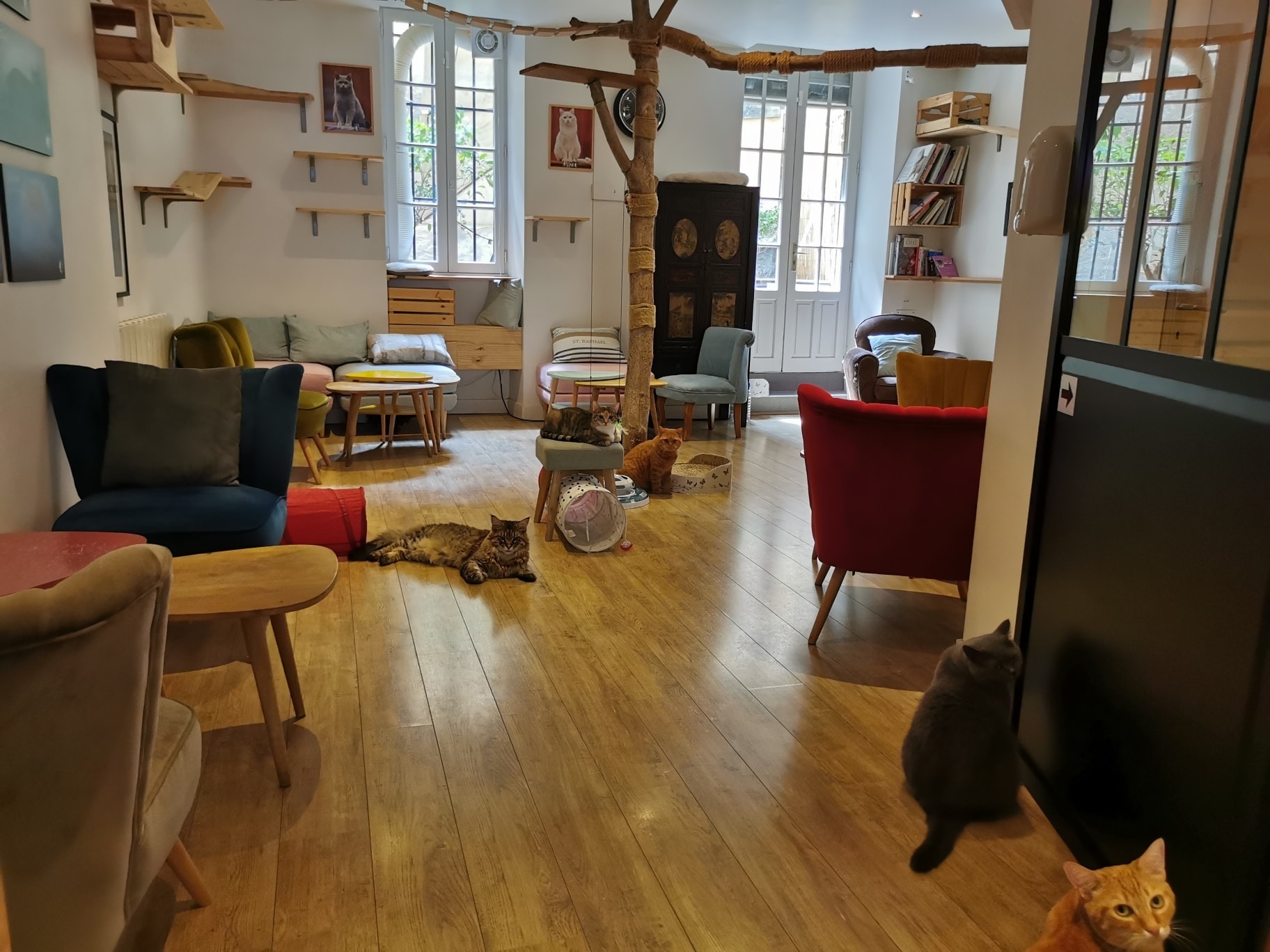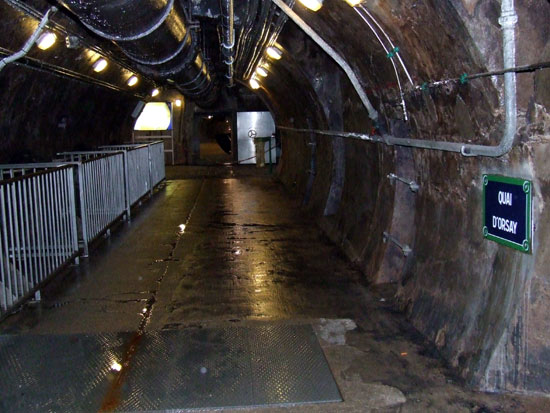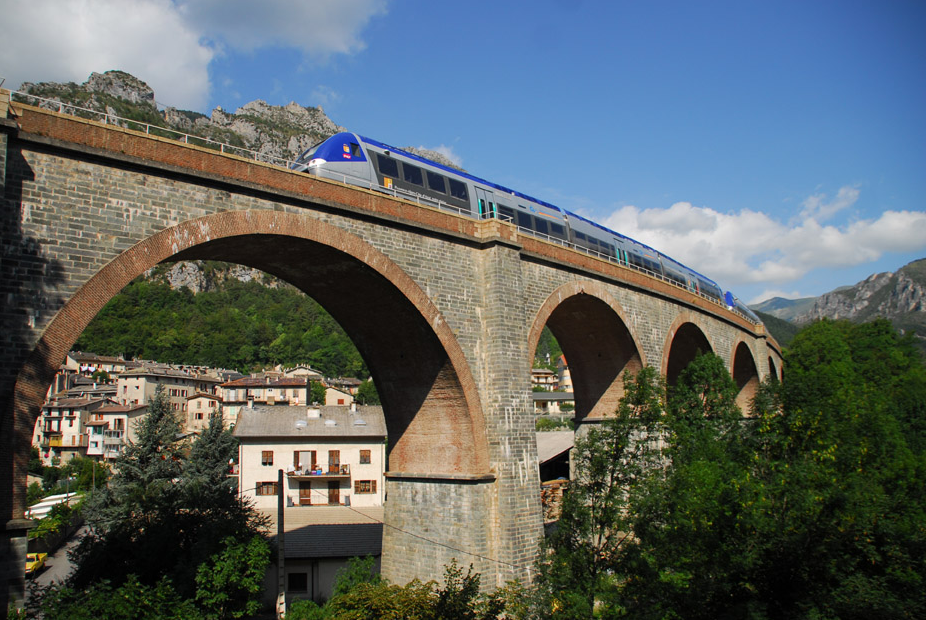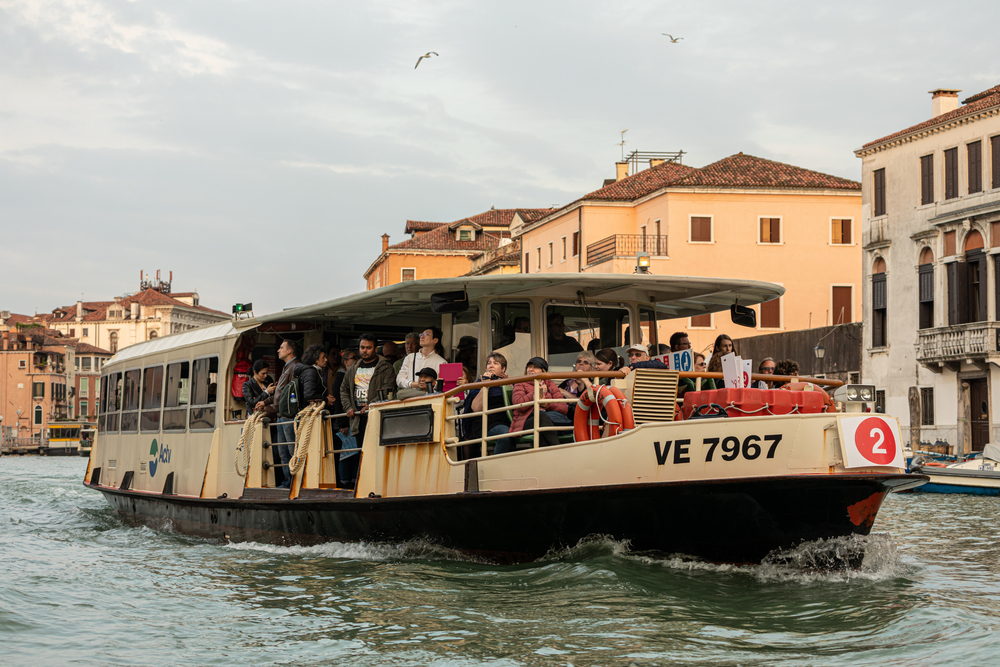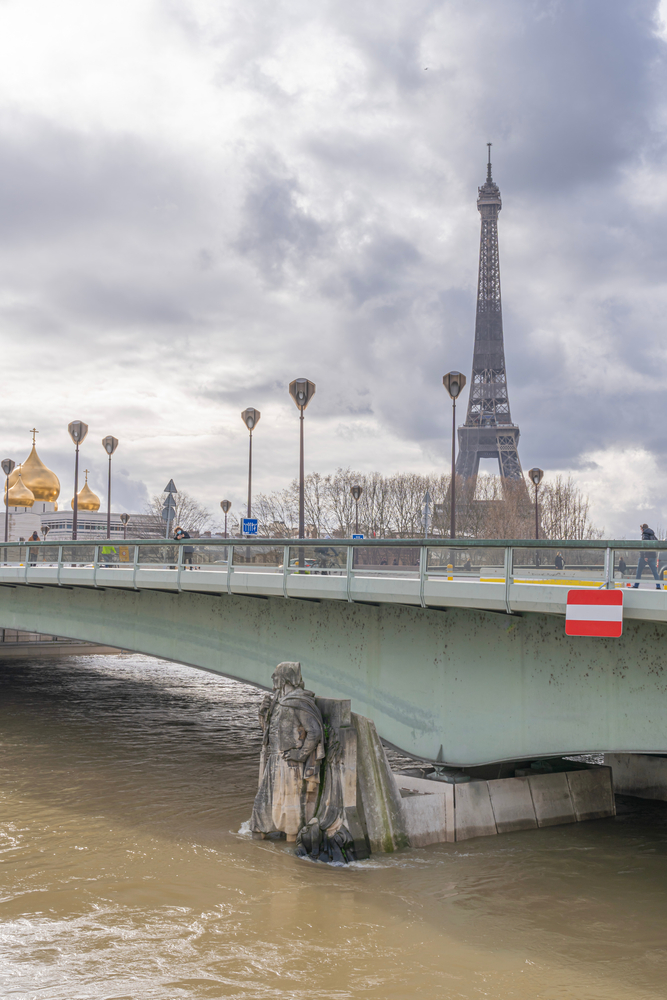Points of Interest
Actua Karting
Chemin de Fournéa
Saint-Laurent-de-Mure, France
Race around one of the largest go-kart complexes in Europe, and satisfy your need for speed at Actua Karting. There are four tracks with three different kinds of karts available for children, with a minimum height requirement of 1.3 meters (4.2 feet). The Handi Kart allows those with reduced mobility to drive too, as controls are on the steering wheel. Timed sessions are for 10 minutes, with rates for children under age 14 starting at €18 (US$22). Find the venue, which includes a restaurant, bar, and shop, 20 kilometers (12 miles) southeast of downtown Lyon. Actua Karting is accredited by the French Federation of Automobile Sport.
Arago Medallions on Paris’ Meridian Line
From Porte de Montmartre to Cité Universitare
Paris, France
Look down while walking around Paris and you might see an unexpected sight: one or more of the 135 bronze medallions, all bearing the name Arago, that dot the city’s streets along the Paris meridian line. This symbolic line, created in 1994 as a tribute to the famous scientist François Arago, extends for 9 kilometers (5.5 miles) across the city, from Porte de Montmartre in the north to Cité Universitare in the south. It runs through the Paris Observatory, Jardin de Luxembourg, and Louvre, among other places. See how many you can spot!
—Information provided by Paris Convention and Visitors Bureau
Arènes de Lutèce
49 Rue de Monge
Paris, France
Built during 1st century CE after the Roman conquest of Lutetia, as Paris was then known, Arènes de Lutèce is the earliest vestige of the city’s history. These days it is a place where people come to relax, but in Roman times it served as a theater and arena holding up to 12,000 people. This architectural gem was nearly demolished in the 19th century but was fortunately saved because of a successful petition spearheaded by French writer Victor Hugo.
—Information provided by Paris Convention and Visitors Bureau
Art of Rue Dénoyez
Rue Dénoyez
Paris, France
If you’re exploring the Belleville district, don’t miss out on the area’s street art hotspot: Rue Dénoyez. Street artists give their creativity free rein all along this 150-meter-long (492-foot-long) street, where art events frequently take place. Huge murals, graffiti, tags, vibrantly colored flowerpots, and since street art is constantly changing, you’ll see something different each visit.
—Information provided by Paris Convention and Visitors Bureau
Astronomical Clock
Cathedrale Saint-Jean-Baptiste de Lyon
70 Rue Saint-Jean
Lyon, France
Located inside the Cathedrale Saint-Jean is an astronomical clock that’s been ticking since the 14th century. One of Europe’s oldest clocks, an interesting feature is the depiction of the sun circling the earth, a major scientific belief of the times that was later disproved. The clock stands 30 meters (90 feet) high and displays the positions of the sun, moon, and the stars over Lyon, all of which gave the clock its name. Above the clock is a tower with several automatons, including mechanical angels, the Virgin Mary, a dove representing the Holy Spirit, and a Swiss Guard. The interesting and ornate astronomical clock seems to reach from the past into the present day, chiming four times daily at noon, and 2, 3, and 4 p.m.
Bassins de Lumières
Impasse Brown de Colstoun
Bourdeaux, France
Is it the digital art that seems to grow and flow over the walls that make this an alluring attraction, or the fact that this art gallery resides in a massive, former concrete bunker built to house Nazi U-boats? Whatever reason brings you here, this abandoned and repurposed former World War II submarine base offers a truly one-of-a-kind experience. Various exhibits have included works by French artists including Monet and Renoir, as well as Chagall and Klimt, ingeniously rendered to convey movement and images that seem to grow or recede in size. The floor to ceiling art is shown via projectors and covers walls some of which are more than 11 meters (36 feet) high and 91 meters (300 feet) long. Check the gallery’s website for hours and current exhibits.
Big Bell
Grosse Clouche 45 Rue Saint-James
Bordeaux, France
Grosse Cloche, meaning “Big Bell,” is one of the oldest belfries in France, in the heart of the city. The Latin inscription on the inside of the bell reads: “I ring the hours and my voice is a call to arms … I sing for happy events and weep for the dead.” A beloved city emblem that was once removed by King Henry II as punishment to citizens who protested the salt tax of 1548, the current bell was cast in 1775 and weighs 7.3 tonnes (8 tons). Christened “Armande-Louise,” it rings for major celebrations such as Bastille Day, VE Day, and Remembrance Day as well as at noon on the first Sunday of each month. The gateway where the bell is hung also had a defensive function and served as a prison.
—Information provided by Bordeaux Tourism and Conventions
Bordeaux Canoe
21 Parc d’Activités des Queyries
Bordeaux 33100, France
See Bordeaux from the water and make memories as a family when you canoe or kayak on the city’s river Garonne. A two-hour tour by Bordeaux Canoe is adapted for kids over 10 who plan to canoe or kayak, with tandem canoes another option for parents and children. Tours take place when the tide stops rising or falling, allowing for calm waters that are easy to manage. Along the route are wild islands of the Garonne, a traditional cabane, or shelter, and a whole lot of history as conveyed by the friendly guides. Paddle under bridges and see the city’s historic buildings from a different vantage point.
Car Art in Car Park
Victor Hugo Market and Sports Center
117 Cours Victor Hugo
Bordeaux, France
What better way is there to designate a parking structure than to have an actual car protruding from the building?! Car lovers may mourn the Jaguar Mark 2 that literally emerges from the wall, an addition added to the structure during renovations in the early 1990s by artist and architect Jean-François Dosso. Intended to be a temporary public art installation, the green car remains, front end sticking out and offering a whimsical touch to the functional gray building that serves as parking for the Victor Hugo Market and Sports Center.
Catacombs of Paris
1 Avenue du Colonel Henri Rol-Tanguy
Paris, France
Touring the catacombs of Paris is creepy yet interesting, though you may want to visit without children. The underground resting place of more than 6 million humans, their bones were moved into these old stone quarries after the city’s cemeteries became overcrowded and raised concerns about public health. Moving the bones took over a year, occurring during the French Revolution that began in 1789. The bones are arranged in the style of Roman necropolises, tucked into the walls of the tunnels that stretch over 300 kilometers (186 miles). It’s a silent and somber experience, seeing layers of bones and lines of skulls, though the popular attraction can mean wait times of up to two hours. Tours are available and audio guides are offered in French, Spanish, and English.
Comédie Italienne
17 Rue de la Gaité
Paris, France
A little theatre devoted to Italian-language plays, Comédie Italienne opened in 1980. It is housed in a former police station, and the Baroque façade of the building gives the theater an appealingly vintage charm. Previously painted red, then in the traditional colors of the harlequin, and finally in the flashy blue it currently sports, the façade features some intriguing details such as little statues of cherubs and the Latin inscription Cadtigat ridendo mores, meaning “One corrects customs by laughing at them.”
—Information provided by Paris Convention and Visitors Bureau
Cooking Class
Various locations throughout Paris, France
You and your kids can have fun and get your hands deep in dough, trying to recreate some of those famous French pastries you’ve no doubt been seeing and enjoying throughout Paris. The city offers several cooking schools that offer classes for children, among them Le Cordon Bleu, Cooking Baz’Art, and Cook’n with Class, which offers a French desserts workshop. So, gather up your budding chefs and plan for creativity and fun, as well as a memorable experience that captures the essence of tasteful Paris.
Cours Julien Street Art Tour
Cours Julien District
Marseille, France
Marseille's hilltop neighborhood of Cours Julien is known as a hip district, and art lovers should plan a visit to see the area’s street art. While making a day of popping into Cours Julien’s restaurants, bars, and shops, you’ll be surrounded by buildings painted with various styles of art. Adding to the neighborhood’s festive feeling is the live music on nearly every street corner. The graffiti covers the spectrum, from detailed and realistic to abstract and whimsical. From realistic scenes to slapdash symbols and fun animal images, the colorful art is engaging to the eyes and a glimpse into the creative minds that made it.
Cunégonde et Malabar
103 Route de Saint-Pancrace
Nice 06000, France
Feast your eyes on the unconventional art that adorns the exterior of a Nice home. Bored with the fact that most houses look the same, conceptual artist Ben Vautier set out to make his own house stand apart from the rest. And it truly does, including found objects and art of his own making arrayed along the exterior of the house. There are signs, clocks, toilets, garden gnomes, broken toys, and picture frames, among other items, and plants are potted here and there at the visually engaging site. Visitors are limited to viewing the outside of the home, though if Vautier is around he is known to speak with visitors and show them around.
Eiffel’s Secret Apartment
Champ de Mars
5 Anatole France Avenue
Paris, France
Many people don’t know that the world-famous Eiffel Tower includes a small apartment built into the structure. Located near the top, the apartment was built by the landmark’s designer himself, French civil engineer Gustave Eiffel. The small apartment, at a height of 304 meters (1,000 feet), is referred to as an office by the tower’s website, perhaps a more appropriate term to convey the little gathering space that was off limits to everyone except Eiffel and a few of his chosen guests. One of these was inventor Thomas Edison, who presented Eiffel with a phonograph, a revolutionary invention that both recorded and played back sound. Those who purchase a ticket to the top of the tower can view the apartment—and phonograph—through a window and ponder the 1889 meeting between the two icons, represented by wax figures within. They are seated on chintz-covered chairs in a wallpapered room, complete with wooden furnishings (most are original items) and a grand piano. The setting makes it easy to forget that the apartment is nestled within the clouds, that is, until you see that massive iron beam running through the space and you remember where you are.
Flower Tree
Place Antonin Poncet, Bellecour quarter
Lyon, France
What makes the Flower Tree odd is the colorful and modern style of it, standing in contrast to most of the city’s historic architecture, art, and sculpture. And that’s probably why it remains, despite being made in 2003 for the Lyon Contemporary Art Biennial. Standing 6 meters (about 20 feet) tall, the tree has 85 flowers, each about the size of a car door. Korean artist Jeong Hwa Choi’s massive circular bouquet sits atop a tree trunk, with sunflowers, daisies, roses, pansies, morning glories, and many other blooms providing a pretty and detailed array. It clearly proved too pretty to remove after the art festival and the Flower Tree found a permanent home at the Place Antonin Poncet, where you’ll find it on the east side of the square. Its pop of vibrant color will draw you in, especially on grey days.
France Aventures Lyon Fourvière
3 Place of the 158th Infantry Regiment
Lyon, France
Children as young as 2 can get comfortable traversing the treetops at this venue. Bring your adventurous family members to try the seven different ropes courses offered at France Aventures Lyon Fourvière. There is a free course for ages 2 and 3, with a 1-meter (3.2-foot) height requirement. Courses are categorized by age and skill level. The Closer to the Sun course is the most difficult, for ages 10 and up. Test your balance on suspended bridges, nets, and other rope features, or try the interactive orienteering course. Reservations are recommended and minor children need an adult with them either in the trees or on the ground. Special events and group options are available.
France Miniature
Boulevard Andre Malraux Off of N12 Élancourt
Paris, France
France Miniature is a popular tourist attraction that showcases miniatures of important French landmarks and monuments. This outdoor park, which is in the shape of the country, covers 5 hectares (12 acres) of land and contains about 160 models of major French monuments and landmarks, each made to a scale of 1/30. Most miniature models are animated, and a network of model trains covers the entire area. Two lagoons at the perimeter of the park act as the Atlantic Ocean and Mediterranean Sea, complete with animated boats.
Garden of Curiosities
Jardin des Curiosités 8 Place de l'Abbé Larue
Lyon 69005, France
Take a seat and enjoy the view—that’s likely the very reason this “garden” exists. The Jardin des Curiosités is a 6,000-square-meter (65,000-square-foot) park in the Saint-Just neighborhood and includes six chair sculptures that provide for the opportunity to take in the expansive city views. The park was built in 2001 to mark the 20th anniversary of Lyon’s relationship with Montreal, Canada, and the chairs were created by a sculptor from Quebec, Michel Goulet. The chairs vary in style, with the seats engraved with French quotes. This is why the garden is also known as Jardin de Montréal. Located on Fourvière hill, the entrance to the site is somewhat hidden, so go through the double entrance gate at the end of Abbé Larue square and follow the path to where the garden is located. Consider bringing a coffee or snack and don’t forget a phone or camera, as the panoramic views of Lyon from this elevated vantage point beg to be captured in time.
Garden of Vestiges
Le Jardin des Vestiges 17 Cours Belsunce
Marseille, France
Long before the modern city of Marseilles rose up around it, an ancient Greek port existed, the remnants of which are within Le Jardin des Vestiges (Garden of Vestiges). The preserved archeological site includes parts of an old Roman road as well as portions of quays and wharves that once saw busy shipping activity about 2,500 years ago. Wander the landscaped garden, noting the contrast between the worn rock portions and the modern buildings surrounding the area, which is near the Vieux Port. The ruins are part of the city’s Museum of Marseille, and admission to the outdoor site is included with the museum’s ticket price.
Halle de la Machine
3, Avenue de l’Aerodrome de Montaudran
31400 Toulouse, France
Far removed from a static stagecraft museum and closer to a street performance than a permanent exhibition, a visit to La Halle de La Machine is an invitation to explore the stories and legends behind these extraordinary mechanical entities. Let yourself be guided, transported and inspired by the team of Veritable Machinists, who spend each day manipulating the machines to bring them to life before your eyes. See small and large performance machines including the Bread Catapult, the Blackbird Pendulum, the Wine Serving Machine, and the Aerial Service with its Pepper Mill, each machine tells a story and entertains through its movement and its identity. Outside are two larger than life structures, the Spider and the Minotaur, which is able to carry up to 50 people on its back for daily excursions in the Montaudran district and stands 14 meters (46 feet) tall.
– Information provided by the Halle de la Machine
Jardin Rosa Mir
87 Grande Rue de la Croix-Rousse
Lyon 69004, France
There’s no doubt a visit to this garden will leave a lasting impression, both for its engaging visuals and the story behind it, which elevates Jardin Rosa Mir to a special status. The multi-level garden was built by one man, Spaniard Jules Senis, who vowed to create a garden if he was released from the hospital while suffering from throat cancer. The garden’s existence marks Senis’ survival, and the name was chosen to honor his mother, who he left behind in Spain when he fled the country during the Spanish Civil War. Rough stones large and small cover nearly every surface of the maze-like, 360-square-meter (3,875-square-foot) garden, which includes ornamental details including mosaics, pillars, a fountain, sea shells, and sea creatures. Senis spent 25 years creating the space, which is a captivating refuge in a fast-paced world, and includes abundant flora including lemon trees and roses. Those familiar with the surreal and imaginative style of Spanish architect, Antoni Gaudi, will recognize his creative influence here. Garden tours are offered from April through October at 2 and 5:30 p.m.
La Tête Carrée Library
Esplanade Kennedy
Nice 06000, France
If you think a visit to a French library sounds boring, think again. Because even if you don’t go inside, gazing at the sight which is La Tête Carrée Library is a surreal and thought-provoking experience. The library is also a sculpture, depicting a neck and the lower part of a chin, with the rest an imposing symmetrical block where a head would normally be. Created by French artist, Sacha Sosno, the library/sculpture is called “Thinking Inside the Box.” Perhaps surprisingly, inside the sculpture are three floors of library, Nice’s main branch, which stands 25 meters (85 feet) tall. A evening stroll by the library reveals lights within, a glowing indication that there are indeed people within, thinking inside this box.
Lavirotte Building
29 Avenue Rapp
Paris, France
Paris' Lavirotte Building is an eye-catching, asymmetrical six-story structure in the tranquil neighborhood surrounding the Eiffel Tower. Built between 1899 and 1901 by architect Jules Lavirotte, the building features a design reminiscent of Antoni Gaudí’s work in Spain. It is one of the best-known surviving examples of Art Nouveau architecture in Paris. Curved lines, dissimilar windows, unusual colors and, above all, beautiful mosaic cladding and an intricately sculpted door (featuring a naughty detail) make this a true masterpiece that one never tires of gazing at.
—Information provided by Paris Convention and Visitors Bureau
Lyon’s Secret Passages
Vieux-Lyon and the Place de la Croix-Rousse areas
Lyon, France
Hearing of secret passageways brings with it an air of mystery, though Lyon’s traboules were built for very practical purposes. The name of the passageways derives from the Latin trans-ambulare, which means “to pass through,” and the city’s first traboules date to the 4th century, built to provide convenient access to fresh water. The passageways in the Croix-Rousse district were built as meeting places for Lyon’s silk workers, of which there were thousands. Unfortunately, the majority of the traboules are not open to the public but the ones that are offer an experience that feels like walking back in time.
Look for an identifying seal that denotes the publicly accessible passageways, with Croix-Rousse’s traboules noted by arrows accompanied by a lion's head. Start the journey in this district, the city’s 4th, at the underground station Croix-Rousse. Vieux-Lyon passageways are indicated with a bronze shield, with the tourist office at Place Bellecour in the 2nd district a good starting point. The city’s longest traboule runs between 54 Rue Saint-Jean and 27 Rue du Bœuf. One famously picturesque traboule begins at 9 Place Colbert/14 bis montee Saint Sebastion and features a lengthy and historic external staircase.
L’Envol des Pionniers
The Flight of the Pioneers 6 rue Jacqueline Auriol
31400, Toulouse, France
Discover the adventure of French airmail service, at L’Envol des Pionniers. See the workshops where the pioneers built their planes and the historic runway from which they took off. See more than 20 prototypes and models of aircraft capable of meeting each successive challenge. Some of them took off from the historic plane field, on the 1.8 kilometer (1.1 mile) runway that is listed as a historical monument. Up to 80 pilots, 250 mechanics, 53 radios, 250 sailors, and nearly 900 administrative staff federated around the foolish project of Aéropostale, which became the very first aeronautical company in Toulouse. Since then, Toulouse has never stopped designing and building planes.
– Information provided by L’Envol des Pionniers
Maison de la Boule
4 Place des 13 Cantons
13002 Marseille, France
Those familiar with playing bocce ball will see it’s a significant part of life in Marseille, where the game is called pétanque. Within the broader category of boules sports, with similar games called raffia, lawn bowling, and bocce, courts for playing pétanque are found throughout Marseille, called boulodromes. Visit a mini museum that recounts the history of the boules game from antiquity to the present day. See a wide range of boules from all periods on display, along with posters and other advertising memorabilia. You will also find a display of every manufacturing stage, a collection of films for ongoing viewing, photo slide shows, and most importantly, a mini boules pitch to check your skills and test your newly acquired boules. Gifts and souvenirs are available for purchase in the shop area of this free museum.
– Information provided by Maison de la Boule
Marseille Soap Museum
25 Quai de Rive Neuve
13007 Marseille, France
Marseille Soap Museum opens the doors to the history of soap, from prehistory to the present, thanks to its frescoes, artworks, documents, objects, and rare pieces. Enjoy the interactive museum with its own “sense of smell space” and the Marseille soap manufacturing demonstration workshop, where you can create your own personalized soap. Check out the hundreds of soap products and a range of genuine Marseille soaps.
– Information provided by Marseille Soap Museum
Montsouris Reservoir
Pavillon de la Porte d’Arcueil
113-115 Rue de la Tombe Issoire
Paris, France
The attractive glass pavilion that catches your eye a stone’s throw from the Parc Montsouris is not merely decorative, it’s a public utility building. One of Paris’ largest reserves of drinking water, Montsouris Reservoir was built in the late 19th century to supply Parisians with clean water. Roughly 200,000 cubic meters (7,062,933 cubic feet) of water is stored at an ideal temperature of 12 degrees Celsius (53.6 degrees Fahrenheit) in this two-story underground reservoir. Visitors will be fascinated as they look down at this cathedral of water—1,800 arch-shaped pillars supporting a huge volume of clear water.
—Information provided by Paris Convention and Visitors Bureau
Monument Arthur Rimbaud
Plage du Prado
Marseilles 13008, France
It looks like a jagged rock formation near the Marseilles shore that invites exploration, but it’s not rock nor random. Monument Arthur Rimbaud was created to honor French poet, Arthur Rimbaud, who died in Marseille at age 37. Despite his short life, ended by cancer, Rimbaud made a lasting impact on art and literature with his surreal themes that defied the norms of his era and pre-dated the broader surrealist movement. The unusual shape of the monument, created by sculptor Jean Adamo, may bring to mind Rimbaud’s poem, Le Bateau Ivre (The Drunken Boat), written in 1871 when he was 16 years old. The abstract shape of the monument suggests a ship’s prow, rising above the surface or perhaps sinking below it. Despite having the appearance of rock, the monument was made from Cerastone, a sand-and-cement mixture created by the sculptor.
Mural of Lyonnais
La Fresque des Lyonnais 49 Quai Saint Vincent and 2 Rue de la Martinière
Lyon, France
Enjoy this public art mural that also is something of a history lesson. Located at the Quai Saint Vincent, the 800-square-meter (8,611-square-foot) mural features 30 famous people from Lyon. The paintings wrap around a yellow building and were intended as a revitalization project for the busy intersection in this central Lyon district. Several figures appear to be standing on the building’s balconies though it is all just a creative artist rendering. The Mural of Lyonnais was painted by the artist cooperative, CitéCréation, which did a similar mural in Barcelona that depicted famous painters. The figures depicted in Lyon helped shape the city’s history and the world’s, from ancient Rome to the modern era. See Joseph-Marie Jacquard, famous for his invention of the Jacquard loom, which automated the silk weaving process and revolutionized production, and Antoine de St-Exupéry, aviator, writer, and philosopher who is pictured with his creation, The Little Prince. There’s also Claude Bourgelat, founder of the first veterinary school, Auguste and Louis Lumière, who invented the first motion-picture camera, and renowned chef and restauranteur, Paul Bocuse, who is a big part of the reason Lyon is known as the world’s capital of gastronomy.
Murals of Lyon
Throughout Lyon, France
There are more than 150 murals gracing the sides of buildings in Lyon, and happening upon them makes one pause and take a second look. You eyes may initially deceive you, though upon closer inspection you’ll realize those aren’t real people sitting on stairs or actual books on shelves, but artistically rendered depictions of them. Though one particular city mural gets the most attention, La Fresque des Lyonnais (Mural of Lyonnais), with its historical and contemporary figures who hail from the city, so many more murals deserve an appreciative look as well. A student art group called CitéCréation began painting the murals on Lyon’s buildings in the early 1970s and today, the creative effort has put the city on the map for the quality of this “street art.” Among notable murals are: Le Mur des Canuts on rue Denfert Rochereau; La Bibliotheque de la Cite at 6 rue de la Platière; Parcours des Roses, in several spots including Lyon Metropole and Champagne-au-Mont d’or; Fresque Bourse du Travail at 5 Place Guichard, and Voyage dans la ville at 98 avenue Lacassagne. One mural, Fresque Lumière at avenue Jean-Jaurès, has a futuristic theme and includes strategic lighting. Plan to seek out the well-known works, or take a day to stroll the city if you want to be pleasantly surprised.
MUSCO
Musée du Chocolat de Lyon
Visitors of Musée du Chocolat de Lyon, also known as MUSCO, enjoy a gourmet sensory experience featuring chocolate, from its cocoa origins as a bean to its ultimate and delectable transformation into a chocolate bar. The museum’s exhibits combine history, geography, and treasures brought back from cocoa-growing countries. Part of the Sève chocolate factory, the chocolate museum offers classes inside its on-site kitchen. Visitors will see chocolate makers and machines in action, with guided tours an option. Stop by the shop to get chocolate bars, truffles, cakes, macaroons, and more. Find the museum 25 minutes north of Lyon in Limonest.
—Information provided by MUSCO, Musée du Chocolat de Lyon
Oldest Tree in Paris
Square Viviani
Paris, France
When strolling through Paris’ Latin Quarter, you might come across a vestige of a long-gone era—a living monument in Square Viviani dating to 1601. This miracle of nature is the city’s oldest tree: a majestic locust tree, more than 15 meters (49 feet) tall. Imported from North America, it was planted by Jean Robin, gardener to Henri IV. Still flowering each spring, the tree was there when Versailles and the Eiffel Tower were built.
—Information provided by Paris Convention and Visitors Bureau
Pagoda Paris
48 Rue de Courcelles
8th Arrondissement
Paris, France
A building in the Chinese architectural style right in the middle of Paris’ stylish 8th arrondissement may come as a surprise. It was built by Ching Tsai Loo, an idiosyncratic art dealer of Chinese origin, who decided to transform a classic Parisian townhouse into a Chinese pagoda to house a private museum. He entrusted the job to the architect François Bloch in 1925. Nearly a century later, this house with its curved tile roof and red façade is a listed monument, and one of the chief attractions of the area.
—Information provided by Paris Convention and Visitors Bureau
Palais Gallien
Gallien Palace 113 rue Docteur Albert Barraud
Bordeaux, France
Want to find the center of Burdigala? For Bordeaux's principal site of Roman remains, tour the Gallien Palace, an amphitheater that dates back to the end of the Roman Empire in the latter half of the 3rd century. The years have not been kind to the "palace," which was torched by Frankish invaders not long after it was constructed. Ignored for many years by the city, by the 16th century it had became the stomping ground for prostitutes and criminals. Only after the French Revolution was it earmarked as a historical site, and left undeveloped.
Today, visitors can pick their way among the ancient arcades and walls, which once held as many as 17,000 spectators. It's worth a visit at any time of day; go at sunset, and the arches are often illuminated attractively. The gateway is in surprisingly good shape, featuring several precise arches that have defied thousands of years in their solidity. A square next to the monument is a good place to sit and ponder the games once held in the former amphitheater, or pop into the building located at the entrance that shows a 3D rendering of the structure’s original layout.
Paris Sewer Museum
Musée des égouts de Paris Pont de l’Alma, 93 Quai d’Orsay
Paris, France
Before deciding that the name alone is unappealing, consider that a visit to the Paris Sewer Museum reveals the city’s history of draining wastewater dating to the early 13th century. This is when Paris’ streets were paved and drains were built, with covered sewers arriving under Napoleon’s reign in the early 1800s. Today’s modern sewer system, stretching over 2,100 kilometers (1,312 miles), dates to 1850—all facts revealed at the museum, located 500 meters (1,640 feet) below ground. Located beneath the Left Bank’s Quai d’Orsay, a visit here is a fascinating glimpse into some underappreciated yet essential city infrastructure. Walk within a tunnel and over a footbridge while seeing pipes, large basins that trap solid material, and a five-ton “flushing boat” that was once the main sewer line between Place de la Concorde and the Pont de l'Alma. There also are mannequins depicting sewer workers, giant wooden balls that cleaned tunnels under the river Seine, and drain water that rushes along from the streets above.
Paris’ Point Zero
Courtyard of Notre Dame Cathedral
Place Jean-Paul II
Paris, France
In the courtyard outside Notre Dame Cathedral, a brass plaque embedded in a concrete slab bears a rose compass and the inscription Point zéro des routes de France meaning “kilometer zero for roads in France.” Under Louis XV, this symbolic marker became the point from which distances to all other French towns were measured. Legend has it that if you walk over this point, your footsteps will always bring you back to Paris.
—Information provided by Paris Convention and Visitors Bureau
Paris’ Smallest Street
Between 50/52 Rue Beauregard and 87 rue de Cléry
Paris, France
It may appear as a simple staircase, yet Parisians say “street” when referring to Rue des Degrés. It is the smallest street in Paris—only 5.75 meters (18.86 feet) long and 3.30 meters (10.8 feet) wide. In fact, it merely consists of a staircase with 14 steps! Built in 1634 following the demolition of the wall of Charles V, the street played a role in the French Revolution, as a commemorative plaque reminds us: “It was here that the Baron de Batz and his friends attempted to enable Louis XVI’s escape on the morning of 21 January 1793.” Nowadays it is a brightly painted little street featuring murals.
—Information provided by Paris Convention and Visitors Bureau
Plant Wall at Musée du Quai Branly
37 Quai Branly
Paris, France
Opening in 2006, Musée du Quai Branly-Jacques Chirac features the capital’s biggest and most beautiful living wall. This stand-alone masterpiece was composed by the botanist Patrick Blanc, who pioneered the concept of the vertical garden. Home to plants from around the globe, the wall is 22 meters (72 feet) high and 47 m (154 ft) long. In all, 15,000 plants from 376 different species embellish the museum’s façade.
—Information provided by Paris Convention and Visitors Bureau
Shakespeare and Company
37 Rue de la Bûcherie
Paris, France
Why is a bookstore listed in the attractions section for Paris? Because this is no ordinary bookstore. With a huge English-language selection, Shakespeare and Company has been a cultural touchstone for British and American authors in Paris for generations. Samuel Beckett, Henry Miller, and William Burroughs all stayed here as young writers, and visitors will see other youthful literature students manning the desks or even cooking and cleaning (in return for floor space for their sleeping bags). Proprietor George Whitman, who enjoyed several Quixotic odysseys around the world, named his store after the beloved bookstore owned by American Sylvia Beach. The original Shakespeare and Company was a favorite of Ernest Hemingway and James Baldwin. Beach even published James Joyce's Ulysses, banned in Britain and America. When she died, Whitman renamed his bookstore in tribute, bought her collection, and assumed her mantle. Keep an eye out for performances, readings, and other events at this Left Bank institution.
The Counter of Cats
Le Comptoir des Chats 8 Rue Pierre de Coubertin
Bordeaux, France
Enjoy a quality lunch among some cuties … kitties, that is! The city’s only cat café at the time of this writing, strolling past the window will tip you off, as the cats can be seen hanging out, some in baskets and others on pillows. The casual interior offers chairs and couches, with plenty of room for the cats, many who perch on stools and wall shelves. An outdoor terrace is another option for lounging with the furry felines. So, stop for a break and enjoy some quiche and salad or coffee and dessert, tastes of the good life with cats whose relaxed and friendly demeanor is another way of expressing joie de vivre (enjoyment of life).
The Sewers
Les Egouts 93 Quai d'Orsay
Paris, France
It was Jean Valjean's escape in Victor Hugo's Les Misérables that brought the Parisian sewers to a national audience. Beneath the cobbled streets of the French capital is a subterranean counterpart, its tunnels and tributaries mimicking the grand boulevards above. On sewer tours, look out for street signs that show visitors exactly where they are in the city. Eugène Belgrand, an engineer cherry-picked by Baron Haussmann for his knowledge of geology and water engineering, designed the 19th-century system. Previously, Parisians' water supply (and their waste disposal system) was the River Seine. As a result of Belgrand's blueprint, as well as later additions, the entire underground network runs just under 2,100 kilometers (1,300 miles). Winter is the best time to visit this occasionally noxious attraction (summer can be decidedly stinky), though don't go after heavy rainstorms, as the water levels rise.
Train of Wonders
Train des Merveilles Gare de Nice-Ville Station
06000 Nice, France
Take a rest from trekking throughout Nice and climb aboard the Train des Merveilles (Train of Wonders). The two-hour ride takes passengers from Nice to the village of Tende, located near the Italian border. Relax while passing through a mountain landscape featuring gorges, bridges, valleys, and about a dozen hilltop villages. The scenery is stunning, and the 81 tunnels along the route cut through the Alps, with their construction a feat of engineering sure to impress. There are four stops along the way in Sospel, Breil-sur-Roya, St-Dalmas-de-Tende, and Tende with commentary on notable places provided in English and French. Upon arrival in Tende, explore the quiet village’s old streets and cafés. There also is Musée des Merveilles, which includes stone age tools and prehistoric rock paintings. Train of Wonders operates daily from June to September, leaving Nice each day at 9:17 a.m., and weekend trips are offered in both May and October.
Vaporetto Boat Ride
Between Place Bellecour and Confluences
Lyon, France
See Lyon’s sights from the water on a relaxing and scenic vaporetto boat cruise. The 30-minute cruises are a kid-friendly length, and the four stops give you the option to use the boat as transport to reach Vieux Lyon (Old Lyon), Saint-Paul, Place Bellecour, and the Confluence districts. The vaporetto runs every day, with the exception of May 1 and December 25, from 9:30 a.m. to 9:30 p.m. Departures are once every 80 minutes. Find the Confluence stop at 14 quai Antoine Riboud, Bellecour stop at 11 quai des Célestins, Saint-Paul stop at 1862 quai de Bondy, and Vaise stop at 9 quai Arloing. Tickets are purchased once you’re on board.
Zouave Statue on Alma Bridge
Quai de la Seine
Paris, France
Built during the reign of Napoleon III, from 1852 to 1870, Pont de l’Alma (Alma Bridge) originally had four statues paying tribute to the soldiers who fought in the Battle of Alma during the Crimean War, including a statue of a zouave (a North African French Army soldier). In 1910, the waters of the Seine came up to the zouave’s shoulders during a record flood. Ever since, Parisians have looked at the statue to judge the level of the river whenever there is a risk of flooding (his head has so far never been submerged). When Alma bridge was rebuilt in 1970, the other statues were moved elsewhere, but the iconic zouave was replaced on the bridge only a few centimeters from his original location.
—Information provided by Paris Convention and Visitors Bureau
Copyright © 1993—2025 World Trade Press. All rights reserved.

 France
France 
